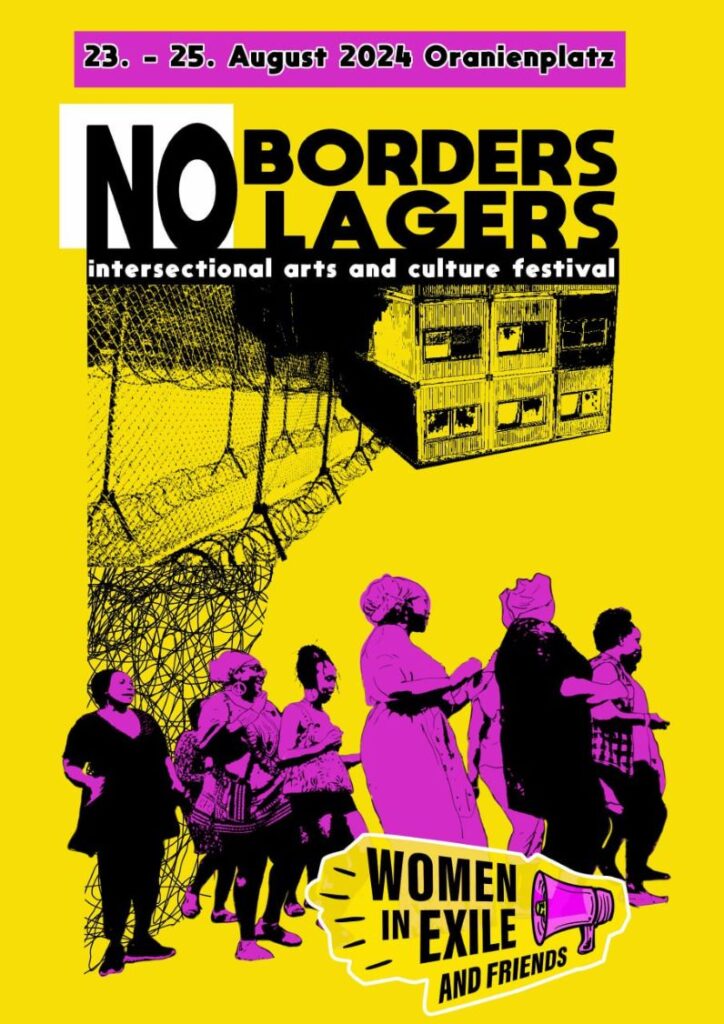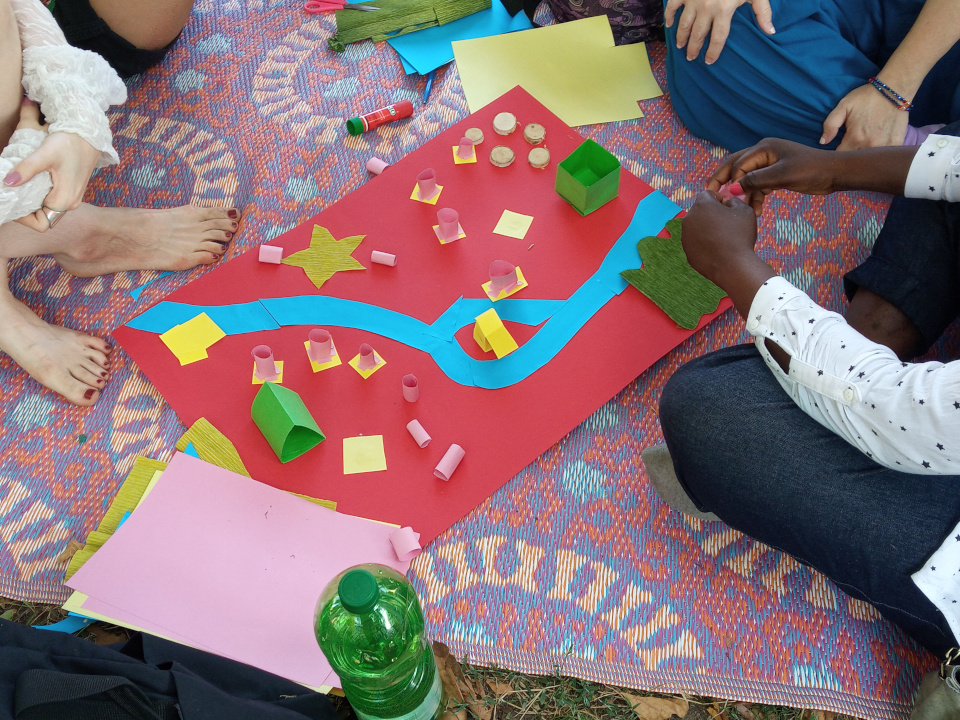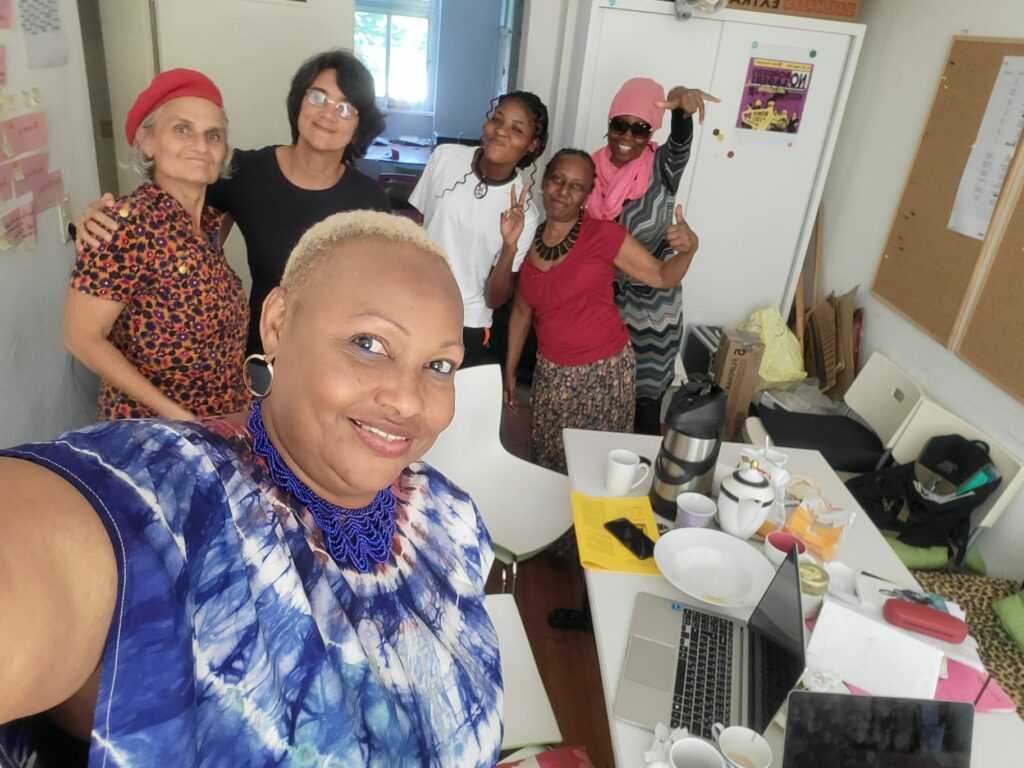
Festival Women in Exile « No borders, No lagers », intersectional arts & culture – 2024
This summer Nit Tekna Logik, together with Centre Kiné Diop, was invited to Women in Exile’s Festival No borders, No lagers, intersectional arts & culture festival.
The festival took place between the 23rd and 25th August 2024 in Oranienplatz, Berlin (Germany).
The goal of the festival is to stand against racism, sexism and discrimination against refugee women and children, in particular against the existence of lagers (refugee camps) that work mostly as prisons, making refugees prisoners of European borders regime. Refugees suffer from all kind of discrimination, from deportation threaten to lack of health and education access. Now they are facing the worsening of situation by the implementation of « credit card » reducing the freedom of where to shop and preventing refugees from having cash money, while there is a proposal to change the german constitution that will restrict even more the possibilities of migration.
This festival has brought together local networks and Women in Exile(WIE) international network, as a way to continue working in the direction of WIE’s moto “Breaking borders to build bridges”.
In this framework NTL decided to do an artistic workshop “Future imaginations” where the question asked was “How would it look like the future city where you would like to live in?”, the aim is to use arts creativity to help us think “out of the box”, and push the limits of our imagination towards the building of new possible futures. More and more our imagination is restricted by “current reality”, this be our own experience or the information transmitted via mainstream media or social networks. A hands on process of creation without rules that limit the possibilities, implies a challenge, we could do whatever we want, fish could fly or the sun could shine underground, so part of the process is to make decisions as what are the priorities, how they should look like, and this should be done collectively.
During the workshop done in the festival, on Saturday 24th, 12 people attended the workshop, and three groups were built, some plastic arts material was given out, and just the original question was asked but it was added that it should include a “crazy idea”. The groups were mixed between migrants, refugees and German participants.
After almost one an half hours of work three mockups came up:

The first group started by writing down individually some ideas, then discussing them before starting their mock up city. Finally they created a city by the sea, which energy power came from a ever burning Auslanderbehorde (foreign affaires office), the city would be divided in neighborhoods that each had all the main public services as mobile hospital, school & daily care spaces (for children & eldery ), shelters for women who suffer violence, collective kitchens as there are in Sudan (during war time), green areas, food production gardens, free shops (cloths, books, food, repaired devices, etc). It was also said that housing would be for free and in the citycenter there would be the market only for women and girls. A new type of Ministry would exist, the Ministry of Hobbies, in charge of providing new hobbies to people looking for hobbies. The police would not exist but instead there would be diverse awareness teams and there would be demonstrations to remind “no-border no nations”.

The second group started discussing directly with no previous individual work, they decided to create a city with small and modular neighborhoods, since the idea is that could arrive by foot to everywhere. In each one there would be mobile houses that could move as the needs of its inhabitants changed. Nature was also important, so it was present through a forest and a river. As something essential, there would be green areas to produce food. The presence of public spaces, where people can gather and have different kinds of events, markets, etc was key. Also in the middle of the island, there would be a cultural center, as a multifunctional space for all type of activities, concerts, etc. In this city there would be no cars or vehicles, except for communal needs where a car or boat would serve as transport, the rest would be bikes.
Some bigger buildings would be planned to host several public services as hospital, library, schools, that instead of being placed separately, they could be put together.
While doing the mock up, several questions arose, as if this city, would be an isolated place in the world, where would production take place, and depending on this resources would be an issue to think about.

The third city, started with the question if it would be a city only for women, finally they decided that it would be a non-gender city since patriarchy would have been abolished. There would be no cars, but bike lanes and water streets. The energy power would be produced by solar panels. Nature would play an important role, so there would be lots of green, flowers and wild animals, and at the same time fields for local agriculture. There would be a lot of public spaces for culture, to meet without consumption. The city has groups of movable houses. There would be sanitary buildings and houses also for children, a big medical center and a welcome center for people coming from outside, who would not be consider as tourists but as guests, and they would have access to guest houses. Some high buildings would be built, symbolizing urban structures that could be used as schools, cultural centers,etc. There was not much talk about the role of work and a reflection that the city, which normally is a consumption space, would have to have also places of production.
In this occasion we had no time to do the second part of the workshop, where there would be a discussion on how and what would be needed to carry out this future city. But we did an evaluation round where several thoughts were shared, as how we are really blocked to be creative and think out of the box when it comes to new ideas, the fact that production (of goods, energy, etc) based on needs was not part of the discussion except just been mentioned in some groups, or it was not addressed how the relations with other cities would take place, how and who would run the different public services, etc. However we could say that there are many things in common that came up as the size of the cities should be “walkable cities”, that is smaller/modular, decentralized, the need of public and green spaces, the need of common public services.
Afterwards Ouba Gueye, from Centre Kiné Diop, explained the case of Dalifort (her neighborhood) as a case study, since it was a neighborhood that has been collectively developed at the beginning, (during the 70s & 80s), when people coming from the countryside settled where there was a forest and started creating a community, ruled by themselves, created the first structure, school, health center until it became part of the district of Pikine. To learn more about the self-organization process of Dalifort you can check the documentary “Dalifort de mains et d’espoir” . She also shared her current work as manager of the restaurant Patisserie Kiné Diop.
We would like to thanks Women in exile team for all the work done to make this Festival happen, for inviting us and for the will of developing this women international network. Thank you for everything!!
